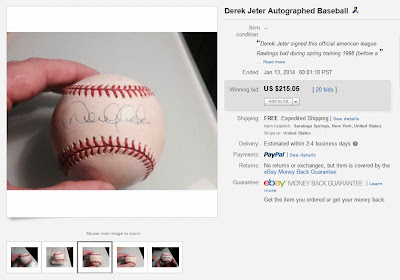As collectors we are always looking for bargains. What's better than getting a great item at an even greater price? But the question to ask yourself, are you getting a "dented can" for that bargain price? Would it be better to pay a few bucks more for a problem free item?
The
article below originally appeared on Numismaster.com. While it is about coins, it applies to any collectible.
Don’t Buy Others’ Problem Coins
by Patrick A. Heller, December 31, 2013
Every dealer has lots of them, as do a high percentage of collectors.
I’m talking about coins that have problems. By that I refer to any
feature that does not represent ordinary wear as a coin is manufactured,
then placed into circulation.
There are so many kinds of
problems that a coin might have that I’m sure this list only scratches
the surface: cleaning, wiping, whizzing, artificial toning,
fingerprints, corrosion, rim damage, tooling, repairs, altered surfaces,
milk spots, orange spots, scratches, clipping, removed mounting, holes,
solder residue, “green slime,” mottled or pickled surfaces, spooning,
bent, chemical residue, environmental damage, and on and on.
Some of this damage occurs for innocent enough reasons, such as the
storage of old collections in materials that unfortunately damaged coins
over time. Some is done by uninformed people who think that cleaning or
otherwise altering a coin may somehow make it worth more – and in the
process invariably decreases the value. In the last category are the
deliberate kinds of treatments to coins to deceive a buyer into thinking
they are of greater value than they are.
Numismatic
organizations have wrestled with attempts to define accidental and
deliberate damage, with no descriptions meeting universal acceptance. At
best, ethical coin dealers should identify problems with coins about
which they are aware. Major grading services either do not grade coins
with problems or encapsulate them with information about the problems.
Coins with problems are more difficult to sell because collectors
generally seek problem-free coins. There are numismatic niches, such as
Bust half dollars, where a high percentage of coins were cleaned long
ago and many have retoned to a relatively natural appearance, but such
coins are the exception rather than the rule.
If coin dealers are being offered problem coins, they almost always
would not purchase them at the same price levels as for problem-free
coins. In my decades in the business, I have seen problem coins trade
at best for maybe two-thirds of the value of problem-free coins down to
less than 5 percent of the price of the same grade of coin with no
problems.
While it might seem to be a bargain opportunity to
purchase coins “almost as nice” as problem-free coins but at a lot lower
price, the downside is the illiquidity of problem coins. Problem-free
coins will sell readily to almost all collectors, while demand for
problem coins comes from a much smaller collector base. As a result,
dealers tend to work with a wider buy/sell spread when trading problem
coins. Sure, problem coins may seem like a bargain when you buy them,
but you will get clobbered should you ever try to sell or trade them.
As a general rule, purchasing problem-free coins will return better
results down the road than going for problem specimens. There are some
series where a high percentage of surviving specimens have some kinds of
problems, such as
U.S. Colonial issues.
If you are considering the purchase of problem coins, try to get
information from someone other than the seller as to what the resale
value might be.
If you go around coin shows, you are bound to
come across some dealer cases where just about every coin has problems.
There are markets for such material, but not all dealers of such
specimens are totally forthcoming to potential customers about the
condition of their inventory. It also happens that dealers occasionally
make mistakes, where they don’t catch every problem on every coin they
have in their inventory. If you are considering a purchase of a problem
coin, make sure to do your homework first and ask for buy-back or
return options. Happy hunting.
Patrick A. Heller
was the American Numismatic Association 2012 Harry Forman
Numismatic Dealer of the Year Award winner. He owns Liberty Coin
Service in Lansing, Mich., and writes Liberty’s Outlook, a monthly newsletter on rare coins and precious metals subjects.
